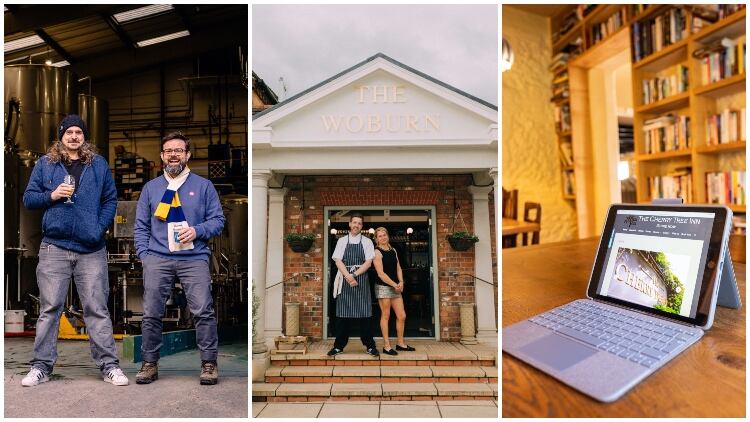Contents
A pandemic year in which "substantial meals" and Eat Out to Help Out both gatecrashed on-trade vocabulary has seen more pub operators take the plunge and establish a food or takeaway offer, often from scratch, in order to continue trading despite Covid-19 restrictions.
Some 84,700 establishments signed up to Eat Out to Help Out – offering a 50% Government-backed discount on food and soft drinks consumed on-site all day, every Monday, Tuesday and Wednesday, up to £10 per person – making 130,000 claims worth £522m.
As a consequence, food-led managed pub groups saw collective like-for-like sales return to 2019 levels during August while the scheme was live, with figures from Coffer Peach's Business Tracker revealing flat like-for-like sales in the 85% of businesses that reopened.
With restrictions easing now, operators who cooked up a food offer during the pandemic are now likely looking for ways to take it to the next level and firmly establish it as a key pillar of their business.
As such, The Morning Advertiser’s new Building a Food Offer webpage, gets stuck into the subject of pub grub with exclusive content on everything from peripheral items such as snacks, chips and bread, to the fish, meat and pub roasts which operators build their menu around.
It’s easy to navigate the hub; use the contents section on the right of this page by clicking on the section you’re interested in to easily get to the information you want.
When you’re done, click on the ‘back to top’ tab beneath each section and you’ll be brought right back to the beginning.
Chips
What makes the perfect pub chip?
Prior to the pandemic, James Drake – head chef at the Pearson’s Arms in Whitstable, Kent – saw his chips voted best in Kent. In a Q&A with The Morning Advertiser (MA), he discusses turning potatoes into solid gold.
According to research cited by Lamb Weston, more than half (56.2%) of pub dinner occasions include chips, fries or wedges as a side, with chunky, thick-cut chips found to be the most ordered potato product in pubs.
What's more, in a consumer test, almost 40% love chips as a side, more than 60% prefer skin-on when in a pub, and 35% prefer them plain, while for 26%, loaded is the preferred serving option. A huge 72% are willing to pay a bit more in a pub for a British sourced product.
Here, James Drake – head chef at the Pearson’s Arms in Whitstable, Kent – who saw his chips voted best in Kent prior to the Covid-19 pandemic, cuts into what makes a great pub chip.
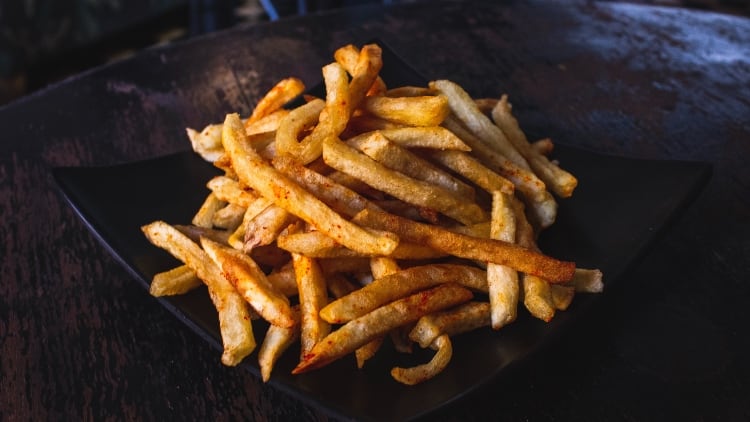
Why do you think its so important for pubs to get its chips spot on?
“Its massively important for great pub chips as they are one of the most popular items on the menu and they go with most of the top selling dishes – burger, fish and chips, ham egg and chips etc. Most people will remember the chips they have had at a great pub.”
What do you think is the secret to absolutely nailing a pub chip recipe?
“It’s all in the ingredients and the cooking process, the final product is only as good as the raw ingredients, it is crucial that every element in the preparation and cooking process is spot on to get a high-end product.”
Advertisement - Lamb Weston
Lamb Weston launches 'The Dukes', a proper British chip that is a cut above the average!
It’s the moment the entire country has been waiting for – citizens rise and prepare to rejoice in this great British occasion as Lamb Weston launches ‘The Dukes’, perfect pub chips – with chips this good, one can see why the British started queuing!
Allow us to introduce to you The Dukes of Chippingdom. Distinctively natural, gloriously golden, thick-cut chips – made from 100% British potatoes - The Dukes are more British than a British bulldog in a union jack waistcoat, spiffing!
We all know that everyone loves chips, and none more than pub goers; more than half (56.2%) of pub dinner occasions include chips, and chunky, thick-cut chips are the most ordered potato product in pubs.
In a recent consumer test, almost 40% declared their love of chips as a side dish. However, more than 60% said they prefer skin-on in a pub, and a whopping 72% said they are willing to pay a bit more in a pub for a British sourced product. The essential attributes were cited as having a crispy outside, being thick cut with a fluffy inside and having a hand-cut appearance.
Enter, the Dukes!
Brought to you by an innovative global leader, Lamb Weston, The Dukes are super tasty, irregularly thick cut to appear homemade and distinctive. With golden edges and a richly rewarding taste, The Dukes will grace every plate with a guarantee of quality that’s as firm as a gentleman’s handshake.
So come on, let’s make this chip nation proud! Be upstanding and make some noise for The Dukes! So far, they have already earned their place in the Craft Guild of Chefs highly esteemed product endorsement gallery; with an above-average rating, they are Red Tractor certified and gluten-free.
Find out more here: http://bitly.ws/fjNA

How do you make your pub chips award winning?
“We use good quality Desiree potatoes, we hand peel and hand cut our chips, so they are all unique and non-generic, we then use the three-part cooking method, blanching, deep frying and then deep frying again at a higher temperature.”
What are the must-have sauces to go with pub chips?
“It has to be mayonnaise, tartare sauce and ketchup, these are undoubtedly the best sauces to dip a chip into.”
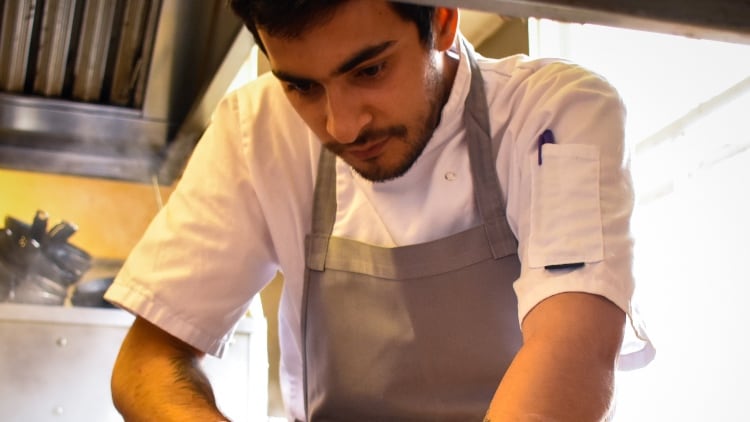
What chip-based dish would you like to see more of in the UK pubs?
“People should be more creative with chip garnishes such as different herb and spice blends to coat, flavour and season chips, then the chips can speak for themselves rather than being covered with another product”
What do you think is the most underrated sauce/food and chip combination?
“The most underrated is chips with curry sauce, this is a personal favourite of mine and tastes amazing but not many people choose to go for something like this.”
Is it ever acceptable to make chips from something other than potato?
“It’s good for chefs to be creative and experiment but at the end of the day a chip is essentially a rectangular shaped cooked or fried potato and this is what defines a chip by recognition so you should leave it be.”
What advice would you offer other publicans looking to shape up their menu?
“If your offering a good quality chip you’ve done your bit, leave the customer to decide what they would like to eat with it then you’re sure they’ll be back for more.”
Snacks
Snacks offer pubs the opportunity to trade up drink-only visits
KP Snacks’ Matt Collins sinks his teeth into on-trade snacks as a means of chipping away at pandemic pub losses.
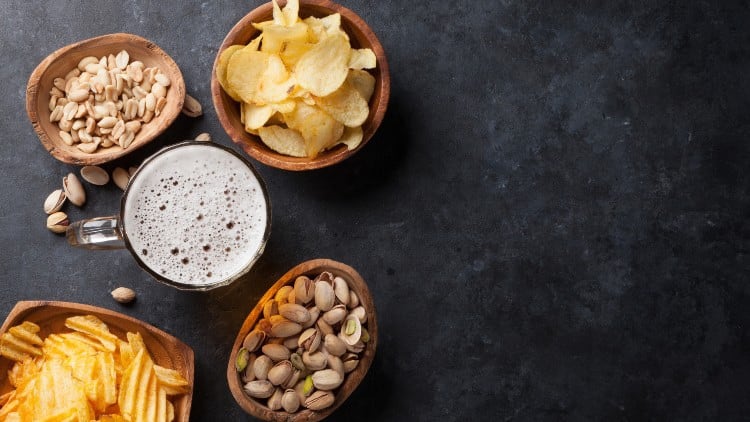
According to Matt Collins, trading director at KP Snacks, pub and bar operators will need to offer the right product mix to deal with economic disruption and a dip in consumer confidence due to the Covid-19 pandemic.
When it comes to snacks, he suggests that pubs and bars can give themselves the best possible opportunity to maximise sales by following a few simple tips.
“Stock a range of best-selling snacks and NPD to meet all your customer needs,” he says. “Ensure your range is always available to purchase and position your snacks with high visibility – 37% of customers purchase snacks because they noticed them while at the bar.

“We know that 52% of customers purchase snacks on impulse and we want to turn these impulse opportunities into incremental snack sales for pubs and bars,” Collins continues. “Crisps and snacks can help pubs recover lost food sales occasions.
“While snacks won’t replace meal occasions, they do offer pubs and bars the opportunity to trade up for drinks-only visits, with pre-packaged snacks delivering a quick and safe solution for customers.”
Collins adds that 86% of customers purchase bagged bar snacks, making it essential to stock a range of best sellers. “However, 47% of customers currently say that they rarely purchase or never do . Ensuring a core range is available and, importantly, visible to consumers is key to capitalising on this opportunity.”
Advertisement - KP Snacks
As the no.1 supplier of bagged snacks in pubs and bars[1], KP Snacks is here to help pubs build snacks sales. As we look ahead, pubs should revisit their snacks range and consider where profit opportunities might lie.
Snacks represent an excellent commercial opportunity for pubs, encouraging consumers to increase spend. While snacks won’t replace meal occasions, they offer pubs the opportunity to trade up for drinks-only visits, with pre-packaged snacks delivering a quick and hygienic solution for customers.
Some 86% of customers purchase bagged bar snacks, making it essential to stock a range of best sellers.
At KP Snacks we have one of the most versatile portfolios on the market, from our best-selling KP Nuts, perfect paired with a beer, to flavour packed McCoy’s, the ideal accompaniment to a cold drink.
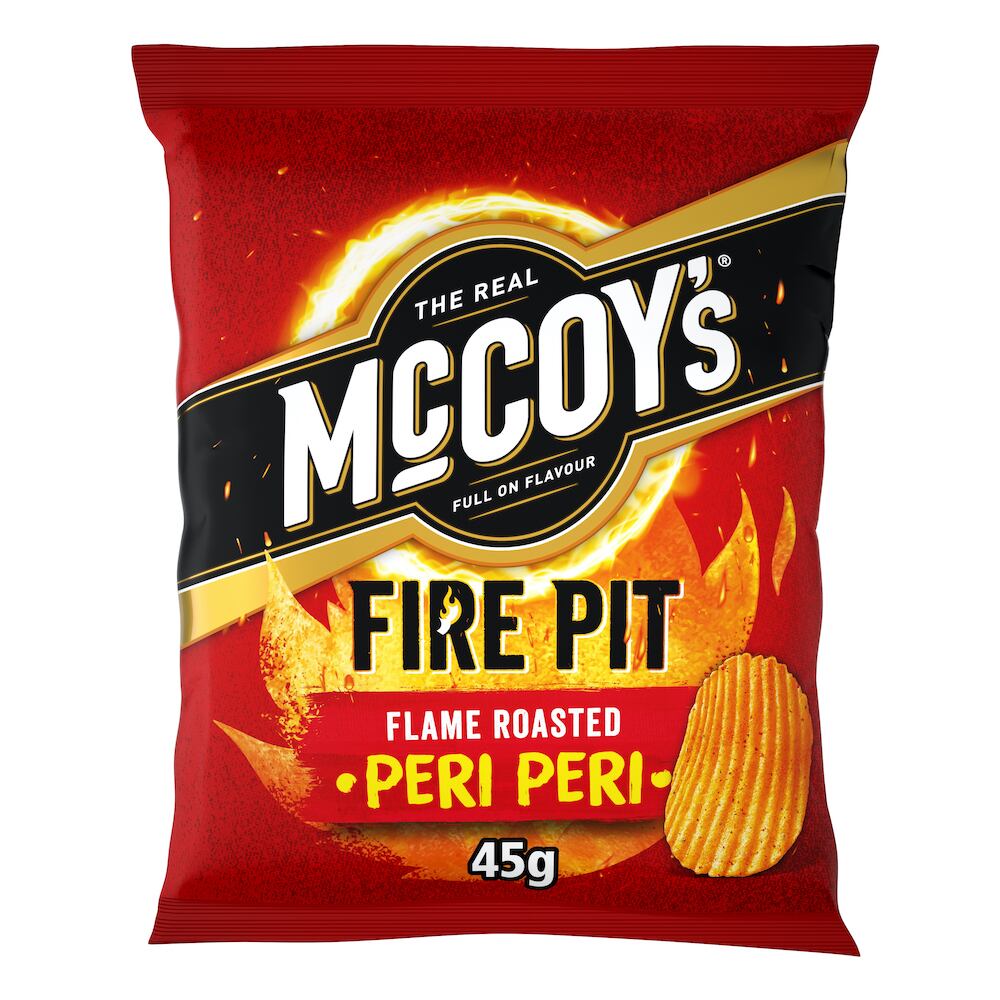
New this year, is our McCoy’s Fire Pit range offering pubgoers a real treat. Inspired by wood-fired cooking, the new products are available in three unique and exciting flavours, Flame Roasted Peri Peri, Flame Smoked Chorizo, and Flame Smoked BBQ Rib.
Familiar brands that are matched to your customer base are extremely important in driving snacks sales and the KP Snacks portfolio is extensive. Tyrrells is an award-winning hand cooked English crisp brand perfect with a glass of wine, while KP Nuts is the UK’s number one nut brand with five packs sold every minute in pubs and bars[2]. Hula Hoops is ideal for a family audience, whilst popchips and POM-BEAR are brilliantly placed to capitalise on healthy snacking trends.
Pubs and bars can maximise snacks sales by following a few simple tips:
- Credibility: Stock a range of best-selling snacks and NPD to meet all your customer needs
- Availability: Ensure your range is always available to purchase
- Visibility: Position your snacks with high visibility to drive sales
Find out more here: http://bitly.ws/fpcz
[1] Kantar OOH Panel 52 w/e 16th June 2020 - Pubs and Bars
[2] Kantar OOH Pubs & Bars Spend 52 w/e 29.12.19
Pub ‘happy place’
According to research from insights agency Perspectus Global to discover the most loved pub snacks, with the humble pork scratching emerging as Brits’ number one accompaniment to an ice cold beer or glass of wine.
A bag of salted peanuts came in second place (34%), followed by its dry roasted relative (30%). Other snacks to make the top 20 list include bacon fries (21%), Bombay mix (14%), Scotch eggs (13%) and the old-school pickled egg (9%).
“We wanted to look into what Brits love and have missed most about their local public house,” David Arnold, director of Perspectus Global said.
"In fact, the survey shows as many as 73% of the men and women surveyed cited their local pub as their number one ‘happy place’.
“We were delighted to see the humble pork scratching top the list of our best loved pub snacks and hope the nation are looking forward to getting back to meeting friends and family over a drink and a bite to eat.”
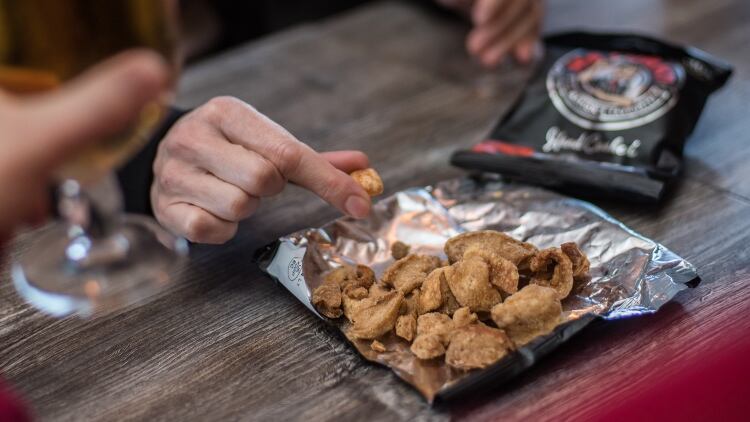
The nation’s favourite pub snacks
- Pork scratchings – 37%
- Salted peanuts – 34%
- Dry roasted peanuts – 30%
- Salt and vinegar crisps – 25%
- Ready salted crisps – 24%
- Bacon fries – 21%
- A bowl of chips – 20%
- Pistachios – 17%
- Scampi fries – 15%
- Bombay mix – 14%
- Scotch egg – 13%
- Chilli peanuts – 12%
- Olives – 12%
- Pork pie – 10%
- Pickled egg – 9%
- Pickled onion – 9%
- Half pint of prawns – 7%
- Cockles – 7%
- Beer sticks / salami – 6%
- Wasabi peas – 5%
Food wholesale
Have an ‘open and honest conversation’ with suppliers about your pub’s environmental goals
The MA looks at how pub operators can work with suppliers to reduce their carbon emissions and food waste.
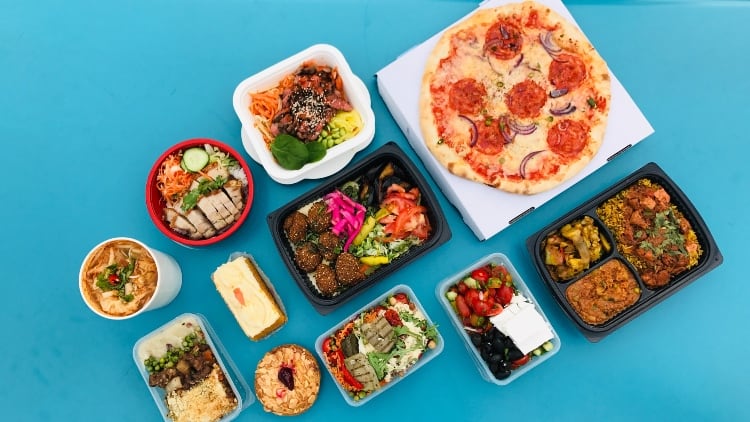
“Pubs and bars can’t serve up a sustainable eating and drinking experience on their own” according to Juliane Cailouette-Noble, managing director of the Sustainable Restaurants Association. As such, she believes that they should work “hand in hand” with suppliers.
“That process has to start with an open and honest conversation about your goals for the pub and how you’d like your suppliers to help you achieve them,” she explains.
“Most suppliers worth their salt should relish the challenge and rise to it, thereby forming a positive working relationship based on a shared objective.”
She suggests that pub operators looking to work towards more sustainable business practices should provide suppliers with an agreement spelling out their sourcing policy – spanning social and environmental standards – and drawing red lines.
“This can include questions about the farming production methods used, information on mode of transport, whether the supplier uses renewable energy and importantly questions about the workers’ rights afforded to those involved in the supply chain.”
Advertisement - Booker/Makro
Blackgate Fresh Butchery, 100% Money Back Guaranteed
Blackgate is an exclusive and premium range of fresh butchery and meat products. Farm assured, sourced from leading breeds and multi award winning. Be assured you can trust the quality or 100% money back, guaranteed.
Blackgate Roasting Beef, 28 days matured and dry aged on the bone. Only £6.49 per kilo until 31 August.
Find out more here: http://bitly.ws/fjNE
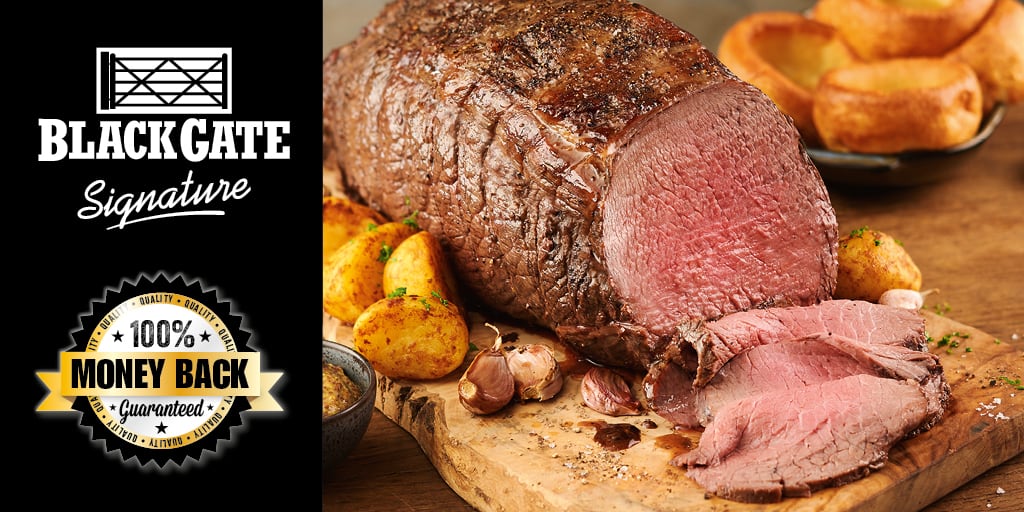
Food waste
With 3.6m tonnes of food being wasted by the food industry each year in the UK, and with more than 2m tonnes of that still being edible, now is the time to make a change and positively impact our environment, according to Ben Gardner, CEO of Navitas Safety.
“Restaurants alone contribute almost 200,000 tonnes of food waste each year, which consequently costs businesses about £682m each year,” he says. “Although the largest amount of waste comes from agricultural and household means, the hospitality and food industries must also do their bit.
“It must also be said that some waste in food is inevitable, and circular economy and resource efficiency experts, WRAP, studies suggest that around 26% of all restaurant food waste cannot be avoided, however, between 50-80% of food is still being wasted and there is a lot of work still to be done.”
With this in mind, Cailouette-Noble suggests that pub operators can push the issue with suppliers to tackle food waste by asking them to offer more frequent deliveries to minimise over-ordering, for example and ensuring they communicate use by dates and food that can be frozen clearly.
She also ponders whether fresh produce suppliers could provide operators with more ‘wonky’ fruit and vegetables – essentially produce that is rejected because it is slightly too small, too big, has tiny spots or scars or is slightly the wrong colour – and if not, whether they could try a pilot.
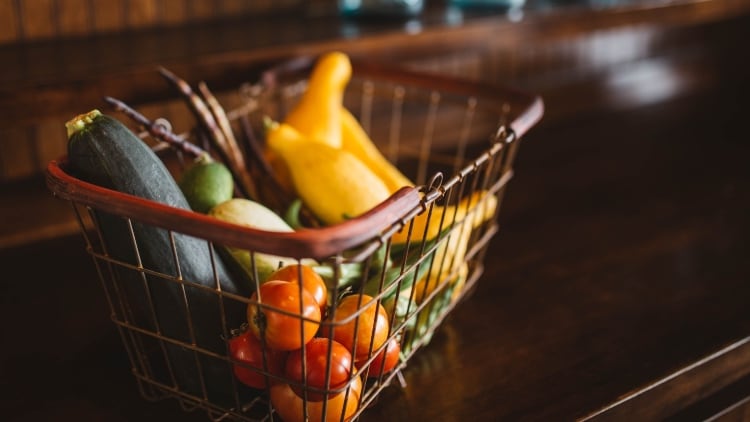
Net Zero
According to Martyn Cozens, UK on-trade director at Molson Coors, there is an “overwhelming consensus” that the economic recovery from Covid-19 must be a green one, and that the UK on-trade and has a massive role to play alongside the brewers, distillers, cider and winemakers that supply it.
“With hospitality responsible for a considerable amount of the UK’s carbon emissions, it’s clear that we need to work ahead of the Government’s 2050 timeline to counteract harmful effects on the planet, not only as an industry, but as individual operators,” Mark Chapman, CEO and founder of the Zero Carbon Forum – a non-profit sustainability consultancy for the hospitality sector – adds.
As such, pub operators should look to cut carbon emissions in every areas of their business – including their relationships with suppliers.
“Suppliers really keen to help their pub customers to be on the front foot should be looking to calculate the carbon footprint of their products and communicating it to them,” Cailouette-Noble says.
“With food production accounting for up to 30% of greenhouse gases, it’s a really significant way suppliers can have a positive impact, helping their customers take their first step to Net Zero.”
Bread
Any chef who hopes to build a great experience without ‘extraordinary bread’ is missing the point
Bready or not? The MA cuts into why pubs making the extra effort to bake their own goods and adding a bakery-style operation to their venue helps them earn a crust.
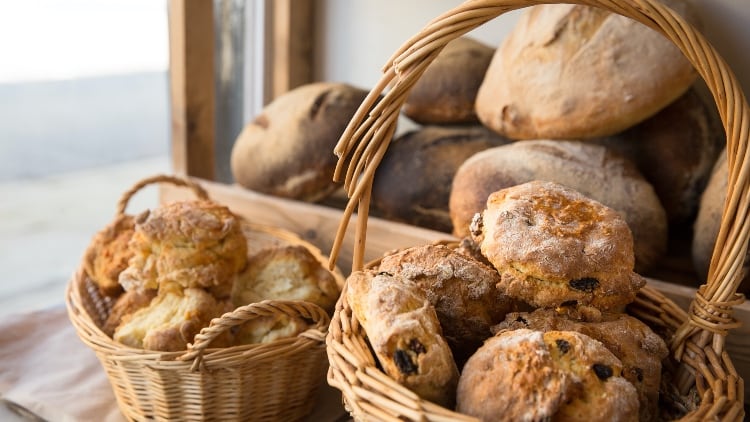
According to Nina Matsunaga of Yorkshire Dales pub the Black Bull in Sedbergh, who started her career in a bakery in Dusseldorf before rising in the UK on-trade as a chef, peripheral elements to on-trade dining – edible or not – accumulatively enhance the aesthetics and enjoyment of eating out.
As such, she argues that operators who offer sub-par bread to accompany their food offer run the risk of leaving their guest’s experience half baked.
“Bread is central to a great meal, by that I mean a really great meal, and a memorable restaurant experience, is linked to the quality of the bread served,” she explains.
“From my own perspective, I assess each and every restaurant I dine on the quality of its bread – bread is important, in my view it’s as important as any other ingredient.
“This being said, there are far too many restaurants that deprive their guests of the experience of exceptionally prepared bread.”
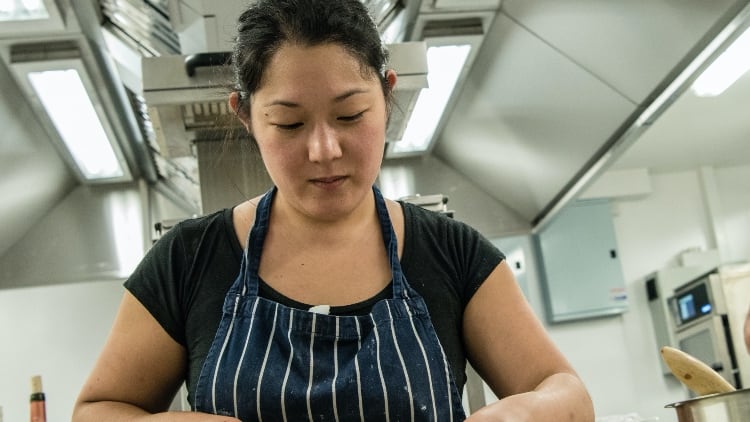
Keeping up with demand
But why go to the time and effort to bake your own? By Matsunaga’s own admission, bread is expensive to produce and is ultimately given away freely to guests without the benefit of additional sales.
“You might say that it’s almost become an afterthought and as such is treated without respect, care or passion,” she says. “Bread requires space, proper ovens, knowledge and talent, and most significantly – time. Bread is, after all, the original slow food.”
However, she adds that any chef who hopes to build a great restaurant experience without including “extraordinary bread” is essentially missing the point.
“It’s a chance to show off what your kitchen is about,” Matsunaga continues. “Being able to create artisan breads to complement the meals being served adds a different element to the dining experience – I feel that it shows you are committed to the success of each and every meal you serve.
“When we started our first bricks and mortar business the Three Hares café and bistro I made the bread for our sandwiches, with our soups and with our evening meals,” she adds. “People asked where it came from we told them, we had to set up a small bakery as part of the café to meet the demand.
“We bought the Black Bull in 2018. We served bread at breakfast, with our lunches and with our evening meals. We baked fresh bread every day to supply both businesses, and inevitably bakery sales grew from our customer base because of the quality of the breads we were crafting.”
When the Covid-19 pandemic hit in 2020, Matsunaga had to close her café due to the lack of space in light of social distancing guidelines. However, she “flexed” and looked at how to enhance her small bakery output rather than simply giving up and staying shut.
“By turning the space into a deli and bakery shop selling breads, pies, cakes and pastries face to face and nationwide through our virtual shop we solved the problem and increased sales, and we now sell our own breads, pies, cakes and pastries in barrow loads,” she explains.
“Alongside that we also sell our own condiments, a range of ready meals, cheeses, charcuterie, wines and beers etc and the dli is here to stay. We now have the problem of finding another site for our café and bistro, but that’s a nice problem to have."
Dairy
Plant-based milk alternatives in pubs about more than just hot and cold drinks
With an increasing number of consumers plumping for plant-based milk alternatives for both health and dietary reasons, The MA explores how they can be used across both food and drink menus.

A shift in attitude means that plant-based milk alternatives are seen as part of a positive and healthy lifestyle, rather than a necessary response to intolerances, according to a report titled Plant-Based Profits from Alpro and BB Foodservice.
Oat, soya, almond and coconut are the top alternatives, with rice and hemp also featuring in both the on-trade and off-trade.
“We’ve seen first-hand how demand for plant-based products has skyrocketed in recent years, and it’s showing no signs of slowing down,” BB Foodservice director of trading & catering Steve Carter says.
“The number of consumers opting for dairy-free products has never been higher and as our report finds, they’re willing to spend more to get them.
“Dairy alternative products have cemented themselves in every corner of foodservice, as evidenced by the fact that one in three people now regularly buy plant-based when out of home.”
Alpro UK & Ireland marketing director Vicky Bhattu adds: “The surging demand for plant-based food and drink, particularly out of home, signals a significant opportunity for operators, but only if they are armed with the insight, advice and know-how to capitalise on this fast-growing and rapidly evolving category.”
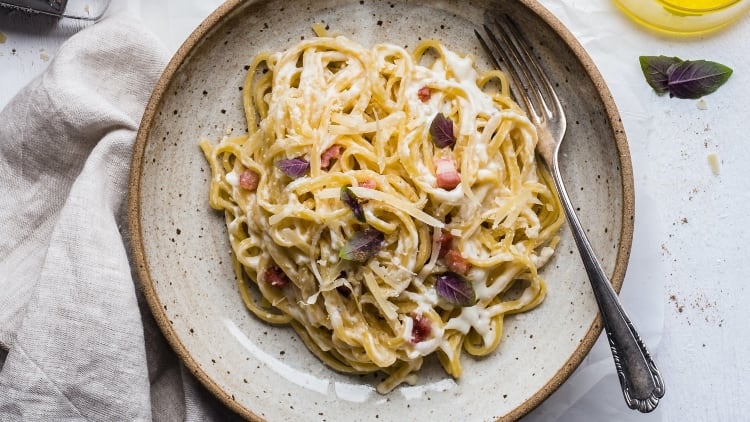
‘Building a perfect food offer’
While these plant-based options command a premium versus dairy, they also offer operators a chance to diversify both their menus and customer base.
"For customers who crave a delicious Cannelloni made with a creamy, plant milk bechamel sauce, vegan soft cheese and diary-free homemade pasta, or a delicious summer pudding with plant-based custard or ice-cream, pub operators would benefit from using a great tasting and truly versatile plant milk across their menus, not just in hot and cold drinks,” Elisa Eymery, co-founder of blended plant-based milk brand Lilk, says.
“An indulgent plant-based milkshake, using a rich coconut-based milk, drizzled with chocolate sauce and topped with whipped plant-based cream and an optional shot of vegan Irish cream liqueur would also go down a treat.
“By building a perfect food offer which caters to all, pub operators will be able to elevate their menu and increase footfall by catering to a wider customer base,” she adds. “It’s not just about offering a single plant-based option anymore, it’s about offering an array of drinks, meals and desserts to ensure that all of its customers are catered for.
“Until now there’s been some challenges around delivering on taste with plant-based milks but by using a blended plant-milk that is truly versatile, offers texture and great taste, pub operators will be able to do this with ease.”
Fish
‘We don’t mind selling out of fish, it means we have bought the right amount’
With programmes like Blue Planet gripping viewers over the past year, The MA asks fish-focused pub operators and industry experts for guidance on how to build a more environmentally friendly seafood offer.
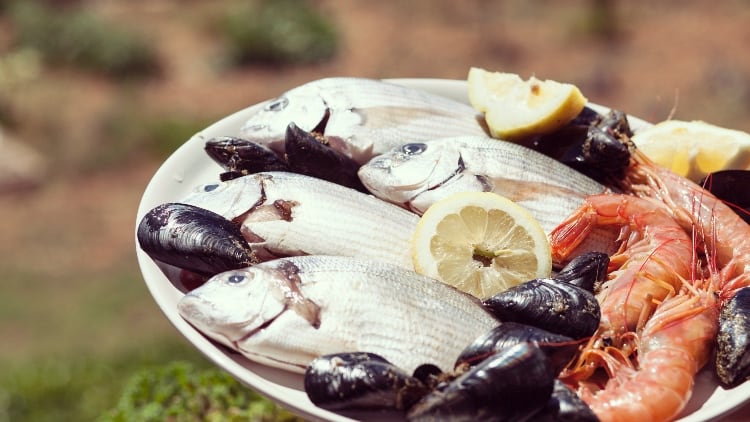
According to Seaspiracy – a 2021 documentary about the environmental impact of fishing – fish populations are in decline to near extinction, with as many as 5m fish being caught every minute.
As such, it’s been forecast that the earth’s oceans could be near empty by 2048, a catastrophic outcome when it comes to reversing the effects of climate change given that fish-reliant marine plants can store up to 20 times more carbon than forests on land.
Therefore, according to Hans Frode Kielland Asmyhr – UK director of the Norwegian Seafood Council – it’s vital for on-trade venues selling seafood to make sure their supply is accountable “from ocean to plate.”
“When shortlisting suppliers, check your seafood buyer’s credentials carefully,” he explains. “They should have close contact with their provider, who should understand local regulations, how annual quotas are set, and follow advice from international scientific research.
“Strong relationships across your supply chain will not only help tell your sustainability story, it will build confidence that your fish is meeting the required standards.”
“To avoid overbuying seafood, try frozen-at-sea fish,” he continues. “Most consumers assume that chilled fish has a higher freshness quality than frozen, but in truth, freezing fish at sea is the best way to lock in freshness, and if stored correctly (at -30°C), it can still taste fresh after 12 months.
Freezing fish also ensures that no fish are wasted, Asmyhr adds. “You can continue offering menu classics, without worrying about seasonality,” he explains. “And with individual portion sizes, which are easily defrosted, there’s no need to defrost a whole box for just one piece.”
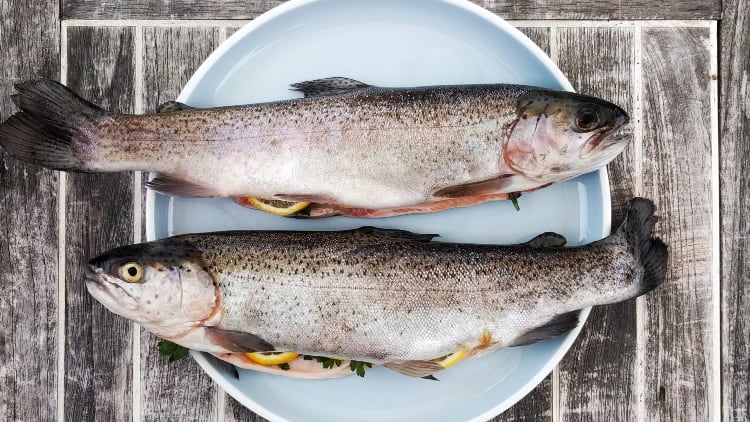
‘More dialogue’
According to Simon Bradley, head chef at the Hollybush and the Horseshoes in Witney, Oxfordshire – which have recently started sourcing their fish from Cornwall-based sustainable fish and shellfish supplier Wild Harbour – only buying line caught fish from small day boats from Cornwall eliminates the danger of overfishing.
“We have an app that tells us what fish is coming onto the market every day so we can only order what has been landed,” he says. “Wild Harbour buy direct from the boats and then send to us so there is no unnecessary travel for the fish making it fresher.”
With guests buying into Bradley’s new approach and front of house teams geared up to explain company ethos, he explains that more direct conversation between boat and bar is essential.
“The way I’d build a better future is having more dialogue with the fishermen as they know their waters and what fish is in season and plentiful as there is no point using Canadian lobster if ours has gone out of season,” he says. “Likewise we don’t use prawns at the moment as we can only get ones reared and farmed from various other parts of the world.
“We also don’t mind selling out of fish, it means we have bought the right amount and we don’t name the fish we use for fish and chips because we will only buy fish that has been caught by small boats – it could be cod, pollock, hake or haddock,” Bradley adds. “All of these are delicious and sustainable, and it’s far nicer than trawler caught fish that damages it he sea and over fishes.”
Meat
What do customers want to know about the meat on pub menus?
Trends are almost always customer-led and, although there is a rise in vegetarian and vegan foods, meat still plays a huge role on pub menus with secondary cuts and provenance helping lead the charge.
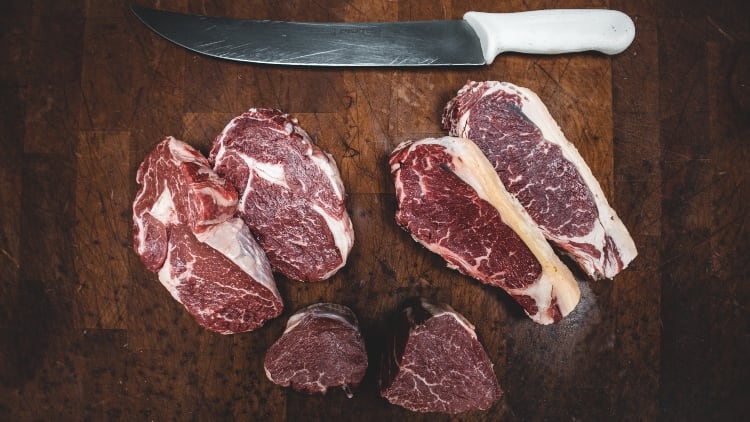
While vegan and vegetarian trends are growing, there remains demand for meat on pub menus.
Trends can be flash in the pan, however, one that shows no signs of dimming is interest in provenance – consumers want to know everything about their food, especially when it comes from an animal.
The Agriculture and Horticulture Development Board (AHDB) represents farmers, growers and others in the supply chain – key to the authenticity of food ingredients.
Build trust
Karl Pendlebury, manager of Quality Schemes – part of AHDB – says: “Most operators need to get a good relationship with a butcher and build the trust in that relationship.
“Operators should ask butchers about the Quality Scheme Mark – it guarantees quality as well as being certified English and British beef or lamb.
“That is based around a specification of carcass, the specification the butcher needs to use that feeds back to slaughter and the farm so you can trace where the meat comes from through the scheme.”
Importance of traceability
When it comes to why operators should ensure there is a way of tracing where their meat comes from, Pendlebury outlines the value it holds with consumers.
“Provenance is becoming a key message question from consumers,” he says. “They want to know where it is coming from, and that it hasn’t travelled half way around the world.
“Traceability is really important. Apart from it being a legal responsibility, it is important and good practice that consumers have the trust in the chef – and the chef has trust in the butcher.
“The trace of it coming from a farm to slaughter facility then butchers and into the food operator is really important to a consumer.
“From a chef ’s perspective keeping that mileage down from farm to slaughter adds to the quality of the meat because of the minimal stress endured in the journey for the animal and that is the first point where quality could diminish. If the animal suffers less stress, the meat quality will be better.”
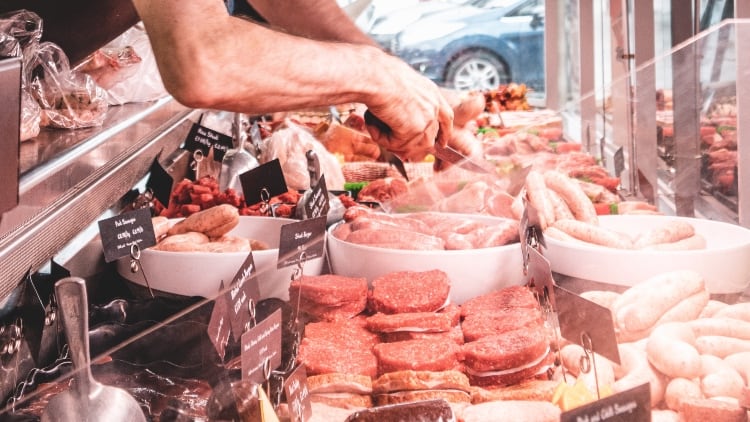
Helping the UK
Pendlebury says when eating out, consumers have always been interested in where the food comes from and are now looking to do “their bit” to help the country.
“When you look at the political landscape at present, people are looking at how they can utilise more British products, as a quality, in-house item,” he adds. “That is a focal point for consumers and chefs.”
Nose-to-tail ethos
For pubs looking to become more sustainable in other ways, they could buy an entire animal and implement a nose-to-tail ethos.
Pendlebury advises on how to do this and make the most amount of money from using cheaper cuts of meat too: “The carcass balance is really important to all operators by utilising the four quarters into different things other than mince. Featherblade makes really nice steaks, which can be used to upsell the carcass.
“As long as you have a reasonable throughput of customers that will eat a whole lamb or will utilise the whole animal. It’s a really good alternative to just buying the primal muscle in.
“Alternatively, they can buy in alternative cuts at a cheaper price per kilo, which can increase their margins.”
Meat modules
AHDB has a free, online meat education programme that is split into modules and covers the full story of an animal, from slaughter to front of house – which can be utilised as they see fit.
It also has a meat purchasing guide that has about 800 cuts to help operators work with the butcher.
Getting meat that is in season and from local suppliers could ensure there is a clear line of traceability, which is something that is becoming increasingly important to consumers.
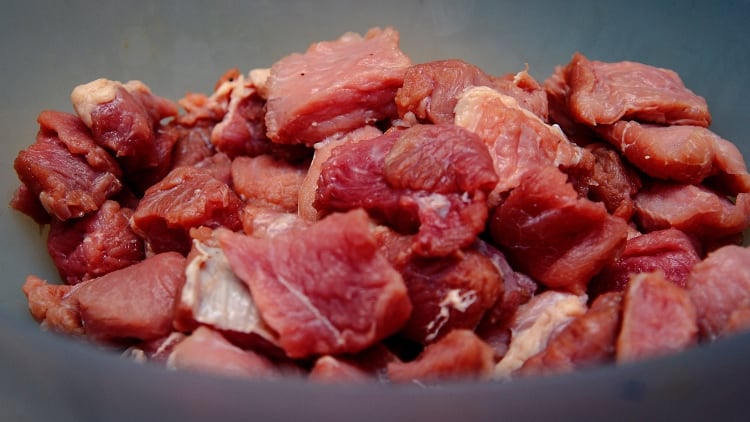
Menu prowess
Russell Allen, managing director of Aubrey Allen – meat supplier to the Royal household – says: “Pubs want to be able to point to something different on the menu, and consumers want to know where the meat is from. Is it organic and locally farmed?
“When the main shooting season comes to an end, sales of game meat are strong. And with the British gastropub era making pheasant dishes less gentrified, it allows for a good mark-up for operators.
“The one-time so called ‘cheaper meats’, like pork belly, have gone up in price so some are moving to different cuts.”
Allen also advises working with and talking to catering butchers about availability and possibilities, especially good-quality alternative cuts left over.
“Suppliers will often sell the prime cuts of meat to top-end restaurants but will be left with other parts of a carcass,” he says. “These alternative cuts can have excellent flavour at a fraction of the cost.
“The top restaurants may take the fillet steak, for example, leaving the catering butcher with the tail end, which can be cut into two 3oz medallions served on a plate. It’s still a great steak on the plate but for less money than a single piece tournedos.”
Outside influences
The same applies to the back end of the sirloin near the rump, Allen said. “Very often we have an excess of that but we can make them into pavés of beef.”
Provenance is a big trend in pub food but looking at the meat category as a wider sector, cultures from outside of the UK are big influences to British consumers when it comes to food, according to Creative Foods Europe marketing director Nigel Parkes.
He says: “Foreign cuisine continues to influence and, in some cases, dominate meal choices in and out of home.
“This is mainly as a consequence of increased foreign travel but it is also due to the retail sector broadening its range of world foods, which is encouraging us to be more adventurous at home.
“Barbecue has always been a British favourite even though we get relatively few opportunities to do it at home.
“However, with on-demand TV now being a huge part of our lives and popular programmes such as Ugly Delicious and Chef ’s Table constantly force-feeding us images of delicious brisket, smoked chicken wings and pulled pork, our desire for barbecue remains as strong as ever.”
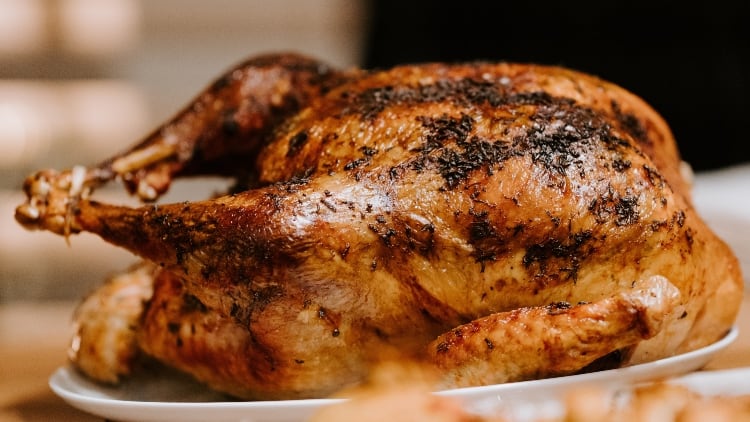
Variations on chicken
There are particular parts of animals that appear to be top sellers and have been staples on pub menus.
Parkes adds: “American smokehouses in the UK are not new, but dishes such as ‘smoky fried chicken’, ‘smoky peri peri’ and ‘brisket chillies’ are starting to become popular with independent and chain restaurants alike, a sign we are catching up with the Americans.
“Chicken breast has been the nation’s favourite for many years, in various formats. Traditionally, nuggets, strips, goujons, Hunter’s, katsu, sweet ’n’ sour, and burgers have all been made from breast meat.
“However, with consumers eating more Asian food than ever and this cuisine’s preference for wings and thigh in products, it is only natural we have become more accustomed to these.
“We are now seeing chicken thighs being used as an alternative to breast meat as a coated chicken burger or in katsu curries.
“Poultry equates to almost half of the meat we eat and is the UK’s favourite with a total of 2.2m chickens being consumed each day.
“It was only a matter of time before we caught on to the versatility of what has previously been thought of as a secondary cut."
Greengrocers
‘It’s great for customers to be able to see the produce they are eating actually growing’
Ben Jones, co-owner at the Olive Branch in Clipsham, Rutland – whose menu boasts pub grown fruit and vegetables as well as own-grown preserves – discusses the process of growing it alone.

We have always used local produce from local, farms, suppliers and producers, as well as foraging and finding local ingredients from local woods, hedgerows etc and growing our own seemed to be the natural progression.
We are passionate about the source of our ingredients, and this give us full traceability.
The opportunity arose to lease the paddock opposite the pub and we jumped at it. The landlord wanted it to remain an agricultural/natural site without any building being put on it, as it was important to keep the green spaces within the village.
What adds to the food offer is the incredible freshness and flavour, there really is nothing like a lettuce, tomato, carrot etc that is cut in the morning washed and them put on your plate for lunch. The crispness, the flavour – no need for a dressing – can’t be reproduced when buying from a supplier.
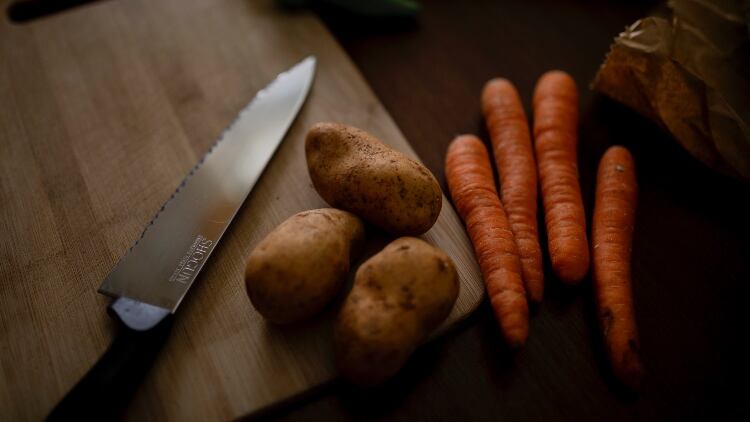
It is also great for customers to be able to see the produce they are eating actually growing. It adds to the customer experience when they head to the paddock and chat to Paul, our gardener.
It is also a great calming environment for the team, just heading over to the paddock and picking the vegetables you need or looking at what is growing is very therapeutic and we hope to combine this into a staff member’s development plan so they have time working in the paddock both for knowledge and for their own ‘wellness’.
Financially, at this time it is no cheaper than buying in the produce. Once we have paid for the labour, equipment, infrastructure, seeds, etc.
The yield is also very good but needs controlling and the kitchen team have to think differently about this, as we might have a large crop of an ingredient and not all of that crop can be used immediately on the menu when it is in prime condition, so we have to think about preserving some of that crop of ingredients.
It has a positive effect on the business as a marketing tool, as it shows our commitment to local ingredients and makes customers more interested in us as a foodie location and generates good social media posts.
Vegan and vegetarian
Make sure vegan and vegetarian dishes pass the ‘would I order it myself’ test
According to CGA’s MealMetrics service, consumer focus on health during the Covid-19 pandemic is likely to make vegetarian and vegan dishes more prominent on pub menus.
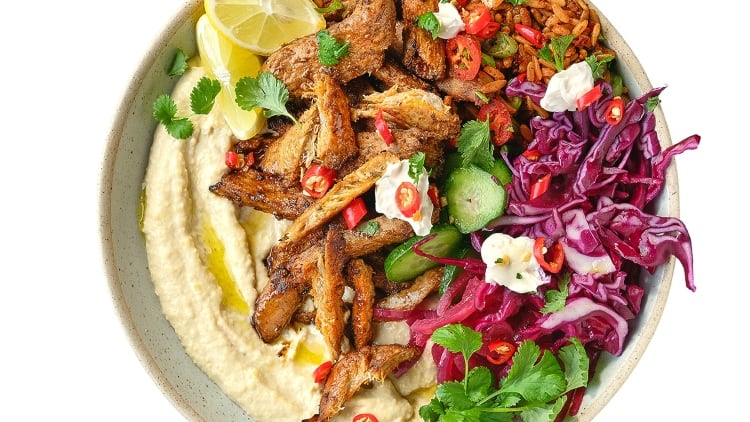
A record 125,000 people signed up to the ‘Veganuary’ while MealMetrics showed that the number of food pubs offering vegetarian and vegan burgers jumped from 70% ahead of the UK’s first national lockdown to more than 80% by October 2020.
CGA’s separate BrandTrack research also found that a quarter (25%) of Brits planned to reduce their meat consumption, adding to the 6% of people already following meat-free diets.
What’s more, with an average meal price of £9.90, these dishes have frequently provided operators with solid margins.
“The rapid growth in vegetarian and vegan diets is a big opportunity for pubs, restaurants and the foodservice sector,” CGA’s client director Fiona Speakman explains.
“Eating habits evolve fast and the pandemic has brought even more nuances to consumers’ behaviour, so it is vital for all businesses to stay right on top of changing choices for when the market reopens”.
Vegan choices attract larger groups

According to Hannah Carter founder of Oggs – which creates vegan alternatives to support a plant-based lifestyle using liquid egg substitute aquafaba – consumers are moving away from ingredients that negatively impact the environment and are actively seeking ways to maintain environmentally conscious lifestyles.
“Outlets we have spoken to are finding that by putting a selection of vegan choices on their menus that they attract larger groups,” she says. “For most it’s about inclusivity, choice and variety – particularly for millennials and Gen Z’ers.”
Likewise, Barry Brazier, senior commercial director at plant-based food brand Squeaky Bean, adds that publicans should consider that there are many people beyond the UK’s supposed 600,000 vegans who are looking to reduce their meat, egg and dairy intake.
“Creating a pub menu that appeals to those seeking free-from options helps to pull in these customers – as well as the larger groups with whom they may be dining,” he says.
‘Consider all occasions’
“Sometimes it can be hard to know what to serve, especially if there’s no vegan or vegetarian staff member in your kitchen,” Brazier continues. “Don’t be afraid to try new ideas out with customers, offering free samples of new menu items at the bar and getting feedback from those pouring the drinks.
“Sharing images of new test items on social media and seeing which receives the most feedback can also be a helpful way to test the water – and show that your pub really does care about meat-free menuing.”
Fundamentally, however, Brazier stresses that whatever’s on the menu, operators should make sure each dish passes the “would I order it myself” test.
“Bland veggie burgers, jacket potatoes and chips are the dishes of yesteryear for plant-based diners, and may fail to inspire your customers,” he says. “Instead, think about modern options, such as Reuben sandwiches, Mexican or faux-duck wraps, or ‘chicken’ salads using meat alternatives – dishes that are quick to prepare and ideal for summer, as customers enjoy dining while they drink.
“Using faux meat products that are ready to eat, tasty and realistic, can make preparation remarkably quick and simple, avoiding any panic about adding new menu options. They’ll also appeal to flexitarians who want to replicate the taste and texture of meat.
“To fully harness the plant-based opportunity, consider all occasions, from breakfast through to lunch and dinner,” he says. “Having a lighter option alongside something more indulgent can help meet the needs of customers who choose to cut back on meat for health reasons, while including meat replacement products can premiumise recipes and add satisfaction.
“And if you serve starters and desserts, make sure to include plant-based options. If one customer on a table finds they don’t have a suitable option, you could miss out on the additional spend from each cover.”
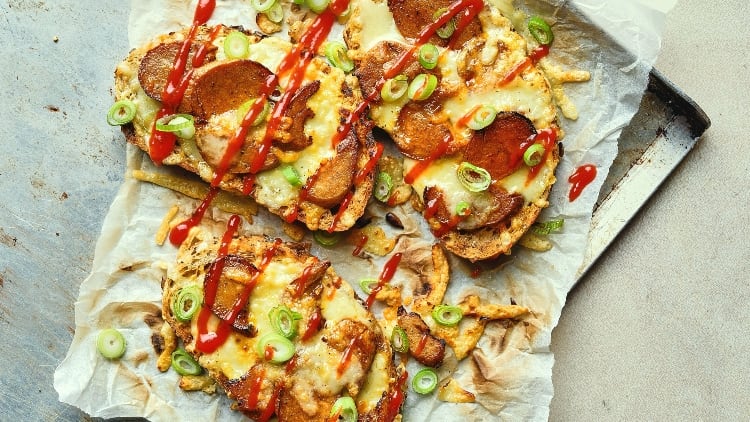
Risk of cross-contamination
Yet, while Kirstie Jones, environmental health expert at Navitas Safety, explains that the number of people adopting vegan and vegetarian diets and lifestyles makes it an important trend for pub operators to consider, it brings with it challenges beyond keeping on top of new product development.
“Whilst this may not seem a cause for concern in terms of hygiene, it can pose a greater risk of cross-contamination,” she explains. “Each dish should not be cooked in the same oils for instance or ingredients stored in the same area of the fridge.
“To reduce and prevent this from happening, and to ensure there are no mix-ups, all meat, vegan, and vegetarian dishes should be separated within each order.
“Ideally, any allergen, vegan or vegetarian dishes should be delivered completely individually,” she adds. “However, where this isn’t possible, these orders should be placed on top and must be double wrapped, with all other orders underneath.”
Roast dinner
The anatomy of a pub roast: ‘take pride in every element of the meal’
Alice Bowyer of the award-winning Liberation Group and Piers Baker from Essex pubs the Sun Inn and Church Street Tavern dissect what makes a perfect pub roast.
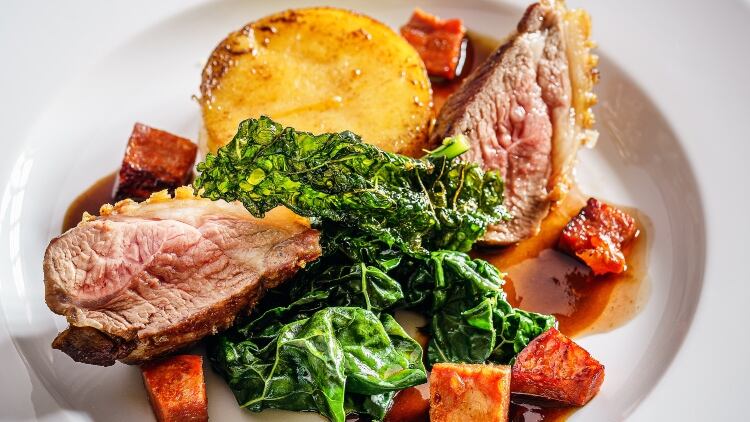
“Sunday lunch services are our biggest trading period of the week for food sales in our pubs and we take them really seriously,” Alice Bowyer, group executive chef at the Liberation Group, says.
“The key to a successful roast is to use the very best ingredients you can get – we use some amazing produce from our butcher, Walter Rose in Devizes and seasonal vegetables from Arthur David in Chew Magna near our brewery in Bristol.”

Bowyer, who fronts up Liberation Group’s Publican Award-shortlisted food offer, adds that attention to detail is essential in delivering a first-class pub roast across the Channel Islands-based pub group’s near 70-strong estate.
“We take pride in every element of the meal, especially the vegetables as they are often forgotten,” she says.
“Cauliflower cheese is available as standard for all our roasts; Koffman’s or Agria potatoes – dependant on the time of the year – make great roasties, ensuring they get a good shake up before going into hot fat to get as many crispy edges as possible and Yorkshires must be big and not too dry.
“One of our house rules is never stack the meat and vegetables over the roast potatoes – it makes them go soggy and ruins all the hard work,” Bowyer adds.
“We’ve been developing our gravy recipe over the years, working with Essential Cuisine products, which has brought a real consistency and quality to our sauces across all our pubs.
“A great vegetable and vegan offering on a Sunday is also really important,” she continues. “Our chefs have a bank of specials to choose from to keep the customers interested – always keeping things seasonal and using hero British-grown vegetables and British farmers as much as we can”

Focus on ‘quality’
Listing the key components of a roast at his pubs, Piers Baker, who owns the Sun Inn in Dedham and Church Street Tavern in Colchester – both Essex – outlines that the difference between a good roast and a great one is, fundamentally, “quality over quantity”.
“A fantastic joint of meat, properly prepared, roasted and rested,” he says. “We use loins of pork from large black Essex pigs from a farm near Saffron Walden. Really thick back fat that crisps up well, keeps the meat moist and flavours it.
“If beef, we use either sirloin or rump. Our chef, Ewan, at Church Street Tavern marinades his in treacle and mustard which gives an extra element of flavour when eating.
“Roast potatoes and Yorkshire puddings are a must,” he adds. “At the Church Street Tavern we make a root vegetable puree as we like the added texture this element gives and the concentrated flavour. Usually, celeriac but at times Jerusalem Artichoke, butternut squash or swede and carrot.
“Jack, the chef at the Sun Inn, slow roasts banana shallots. Both sites provide seasonal vegetables, but it is mainly heritage carrots and really good greens. Could be Swiss chard, black cabbage, January king cabbage, hispi. But we really like the freshness the cabbage element brings.
“The gravy is gravy and not jus,” he continues. “The pork has apple sauce, beef freshly made horseradish cream. And we ensure there is enough room for a starter or pudding! Quality, not quantity.”
Desserts
‘A twist on classic dishes’ – whipping up a winning dessert offer
After a shake-up of his pubs’ menus, Scott Soteriou, executive chef at London-based Loci Pubs, pours over some hints and tips to ensure guests never pass on dessert.
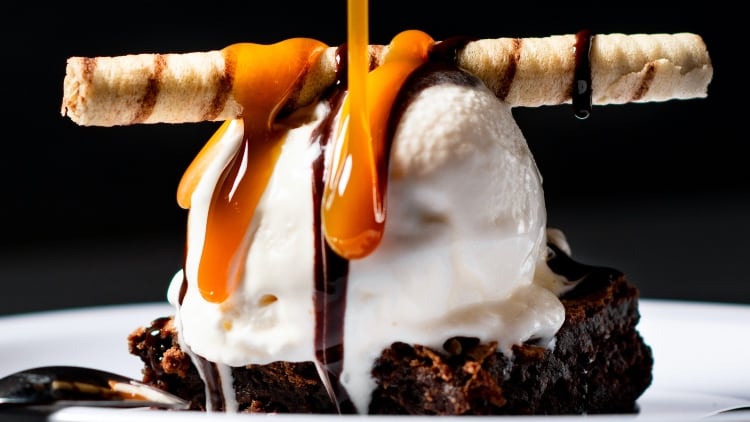
A small collection of historic pubs in north London, restored and brought back to life, both of Loci Pubs’ venues – the Clifton and the Duke of Hamilton – pride themselves on serving exceptional food and great beer.
Part of this is ensuring that involves delivering a crème de la crème dessert menu, to maximise spend per head and customer dwell time.
“Our customers are very food focused – even if they’re only coming to catch up over drinks, there’s usually some bar snacks in there somewhere, or they’re easily tempted to stay for lunch or dinner,” executive chef Scott Soteriou says.
“A lot of our guests will go straight for the starters because they sound so delicious and they’re great value for money. Our portions are proper pub portions and, usually, we find that their eyes are too big for their belly – as my dear mum used to say.
“To encourage people to order dessert we try to put a twist on classic dishes,” he continues. “People are most likely to be tempted by something familiar, then we add a little something special to reel them in.
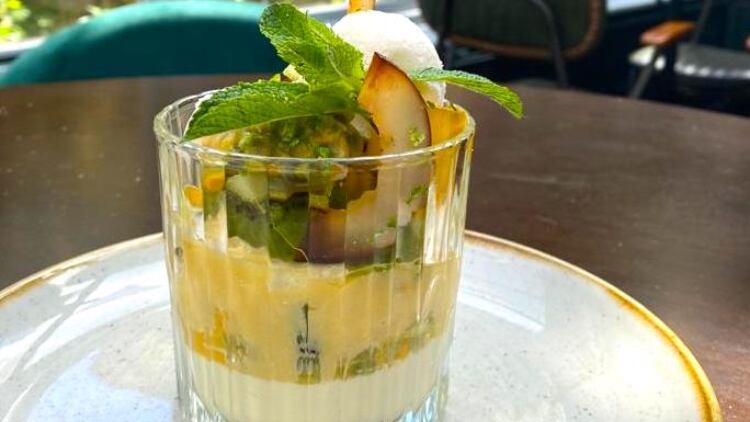
“For example, the latest addition to our menu is a tropical version of an Eton mess – homemade crunchy meringue, rum-grilled pineapple, kiwi, mango, passion fruit curd and toasted coconut.
“I think it’s important to create desserts that reflect our seasons,” he adds. “We’re fortunate to be enjoying a really warm summer at the moment – in terms of flavour profile and produce.
“It’s the best way to anticipate the kind of mood the guests will be in when they walk through the door.”



